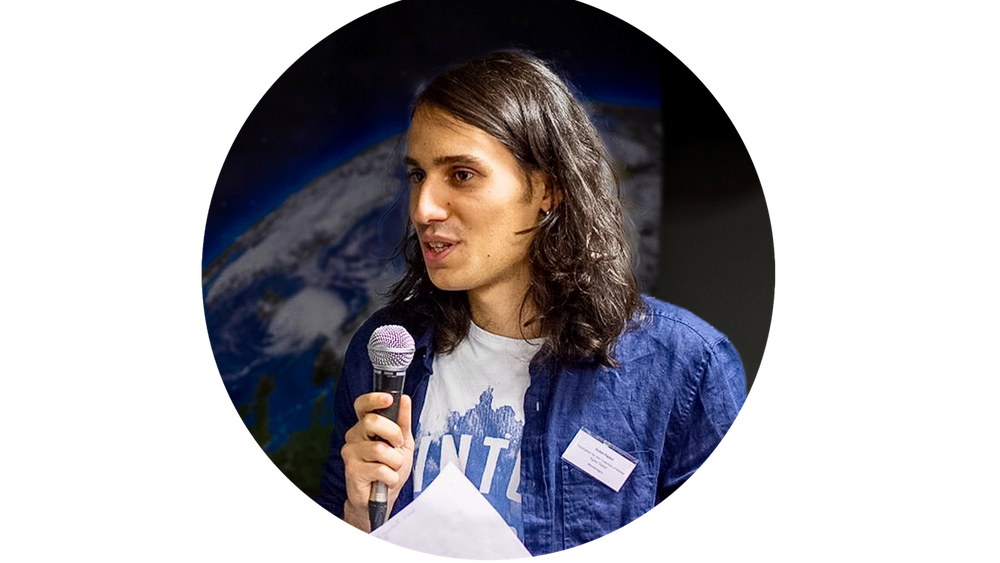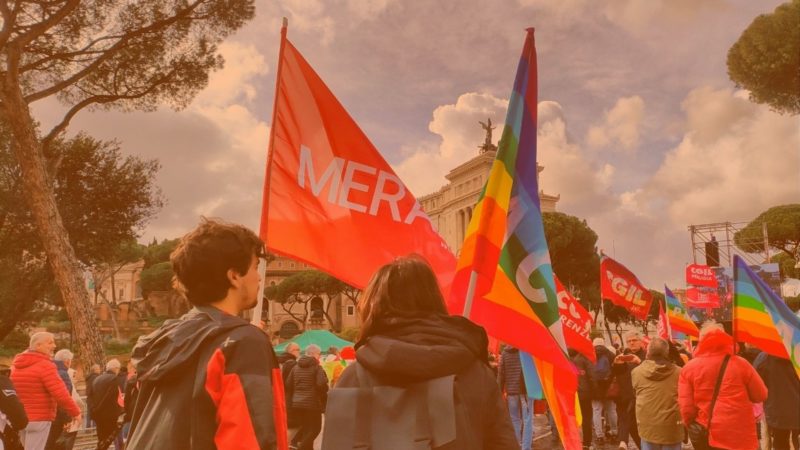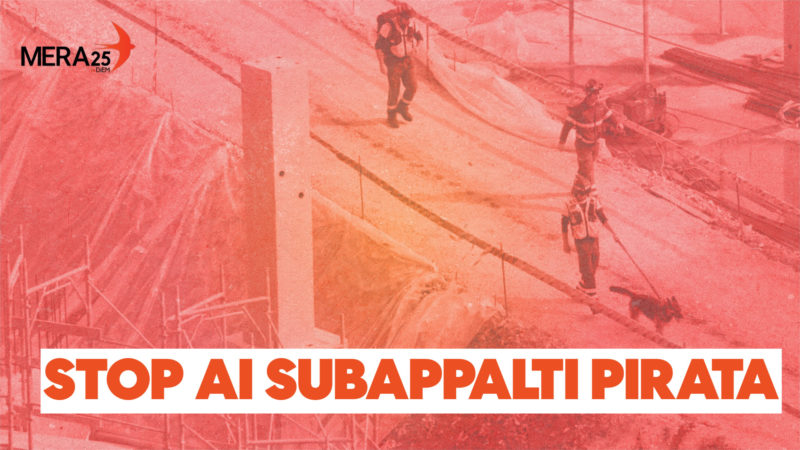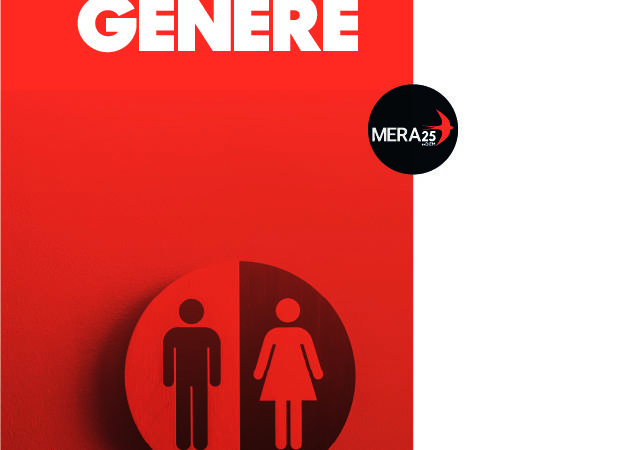This week everyone’s talking climate change and our leaders’ failure to tackle it.
But instead of fixating on what our leaders should be doing differently, I thought it would be interesting to ask how climate activists could improve their work, reach more people, and have more impact.
So I dropped in on Dusan Pajovic. He’s the coordinator of DiEM25’s Green New Deal for Europe campaign, a social psychologist, and a seasoned environmental activist.
He’s also the organiser of the COP OFF! alternative climate conference, which is happening online this weekend. It features speakers like Noam Chomsky, Yanis Varoufakis, Caroline Lucas and many other progressives.
Dusan is very open about what climate activists could be doing differently. We talked about tactics, messaging, and how to bring the working class into climate activism – who have so far been excluded.
I learned a lot from this chat, and I think you will too.

Climate protesters in London in August 2021 (Source: Getty Images)
On bringing in activists from the working class
DUSAN: Environmentalism is not intersectional enough. It has been part of this New Age millennial hipster movement and it isn’t resonating with the working class.
And this is unfortunate because it’s the working class that’s going to feel climate change the most. When it really hits, we won’t all be in the same boat.
Like when the pandemic hit. The rich went to their houses in the middle of nowhere and ordered delivery service. The working class didn’t have that privilege.
With climate change, the working class will be more affected by mass migration. Their homes are more likely to be flooded.
So the working class should be at the front of the battle and not the back.
MEHRAN: In terms of recruiting more working class people to the climate change movement, how would you recruit someone who doesn’t know where their next wage is coming from, whose livelihood has been destroyed by the pandemic? How do you say to them ‘become a climate change activist on top of everything else you’re dealing with’?
DUSAN: People are frustrated and angry and we need to channel their anger towards the right things. Towards those who are responsible. And we have the data that shows who is responsible for climate change – and it’s not immigrants, women, or LGBT people.
We need to make our case to audiences and show them we’re not letting them down by fighting for green issues, but that we’re connecting the dots of climate change and economic change together.
Because only in that way, we can actually do something [about this problem].
MEHRAN: So, you’d say to them that if your job and your livelihood are threatened now, things are going to be much worse in the future. And the reason why, is what you should be working on.
DUSAN: Yes. But we are not working on a single issue. We are fighting for both: the transformation of capitalism into something new, and tackling climate change.

Photo by Karsten Würth (@karsten.wuerth) / Unsplash
On getting strategy right
MEHRAN: Let me bring everything down to the level of this hypothetical working class activist, who you’ve recruited.
Give this activist their mission for the next two months. What can they do during that timeframe that could make a difference?
DUSAN: First we need to raise awareness about all these things. Because we need critical mass.
And then we need to present a programme with concrete steps, and push governments to implement it. As far we can — with petitions, with civil disobedience, with people’s assemblies. And if they don’t implement it, then we need to replace them in elections.
So my advice for that environmental activist would be: get ready for a European Parliament elections in 2024, because that will be the final countdown for climate change.
On civil disobedience and direct action
MEHRAN: Let’s talk about those actions. Fridays For Future [the climate movement started by Greta Thunberg] organised successful school strikes. Are there other tactics that have proven to move things forward, on the climate issue?
DUSAN: I’m big fan of civil disobedience. But of course, it needs to be strategic. It needs to be planned thoroughly, with legal help.
So don’t do it on your own. Find your comrades, organise and protest in the most creative ways you can envision.
There are many examples [of effective, peaceful tactics]. Like the book Blueprint for Revolution. Like [the work of] Radomir Lazovic [founder of Serbian political movement Don’t Let Belgrade Drown], who you interviewed about creative [protest] actions.
These are all effective ways to send the message. Because as it seems, not many people are listening to our conferences and our talks.
MEHRAN: OK. Let’s imagine I’m a decision maker, and it’s within my power to push button 1, which you want me to push, or button 2. Why am I more likely to push button 1, because you’ve managed to gather people for a civil disobedience action?
I understand that such tactics will bring more people to the movement and raise awareness. But let’s separate the idea of growing membership, from what is going to get that decision-maker to push the right button. What will achieve it?
DUSAN: That’s why I said it has to be coordinated and effective. Corporations are today fused with government. We need something that will shake corporations’ economic interests. Because they listen when they lose money.
Look at the Make Amazon Pay campaign [coordinated by DiEM25’s sister organisation Progressive International].
If we gather five million people to not buy anything on Black Friday, it would disrupt them [Amazon]. They will feel it. If their workers on that same day, go on strike, Amazon will lose even more business. So they will see that [the current situation] is unsustainable. He [Jeff Bezos] cannot keep replacing his workers when they go on strike, every time…
MEHRAN: But there you’re still relying on massive numbers getting involved, which is what progressives always rely on. And that’s hard to achieve.
Can we not be more strategic to make that decision maker push the right button? With a smaller number of people, doing a targeted action? Instead of creating a logistical nightmare…
DUSAN: There are examples of that. I personally think we have a lot to learn from animal activism. Like the SHAC campaign [an international animal rights campaign to close down Huntingdon Life Sciences, Europe’s largest contract animal-testing laboratory, in the 2000s]. With a handful of people, they created millions in losses for one company.

SHAC website in 2014.
And the Earth Liberation Front, in the 80s. They inflicted millions in dollars of damage to corporations through different forms of direct action.
These campaigns were very radical though. And they happened a while ago. Nowadays we’ve all been co-opted by social media, thinking we’re activists if we tweet something.
MEHRAN: Right. To be clear, we’re not condoning these tactics, we’re looking at what has been successful and what hasn’t.
DUSAN: Yes.
On negative climate change messaging

Source: Cagle
MEHRAN: Let’s switch gears and talk about messaging.
Climate groups’ messaging seems largely to be: “we’re all fucked, and this is our last chance to fix it”. It’s very negative.
OK, man-made climate change is a reality and it’s urgent. But the way we tell its story seems to be preventing activism on this issue from becoming mainstream. What would you say to that?
DUSAN: Climate change activism is already mainstream. It’s one of the fastest growing social movements. Over 90% of Europeans agree that climate change is real, and that more action should be taken. Especially among youth, Gen Z.
But it’s true that Extinction Rebellion [a prominent climate activism group] doesn’t have high acceptance in Britain [where the group was founded and are most active], according to a recent poll.
So their more radical message, for some reason, isn’t resonating with people that much. Or at least their actions.
On tailoring the message to target corporations

Photo by veeterzy / Unsplash
MEHRAN: You’ve named corporations as villains in this story. So why don’t we see more messaging from climate activists towards corporations explaining how climate change is going to impact their bottom line, their share price, their interests? [The UN proposes this approach in this communications guide on climate activism.]
DUSAN: I think [for corporations] it’s about the profit right now and not in the long run.
A circular economy [an economic model designed to minimise resource input, waste and emissions] would make them more profit — but they don’t care.
On cutting through the noise
MEHRAN: You know the information environment we live in at the moment. You’re aware of the collapse of the media’s business model and the rise of social media and the polarisation of opinion.
And it sucks; it’s bad for our discourse. But that’s where we are today.
Now, much of the current strategy for climate activism seems to be based on persuading people, giving them the facts. As we navigate this ‘post-truth’ era, isn’t it getting increasingly hard to do that, and thus to enlist more activists to the cause, get decisions changed at high level? Isn’t it going to make progress difficult?
DUSAN: I hear you. That’s why I think that we need a different approach. We need to be more personal regarding people’s stories and give concrete examples, not just facts. We need to listen to their problems and then explain how climate change will affect their own lives, and why they need to join together to tackle it.
Personal stories are not easy to source for activists, but we need to work on it. We need to be caring and listening and empathetic. And start incorporating feedback from people.
Look at the rise of the right. How is it happening? Because they say “yes, we hear that you’re afraid”. They channel people’s anger wrongly — like towards immigrants.
But in the first place, it’s because they listen to people. We need to start doing the same.

A protester at COP26 in November 2021 (Source: Sky)
COP OFF, DiEM25’s alternative climate conference, takes place from November 14 to 16. Read more about it here.
Volete essere informati delle azioni di DiEM25? Registratevi qui!




